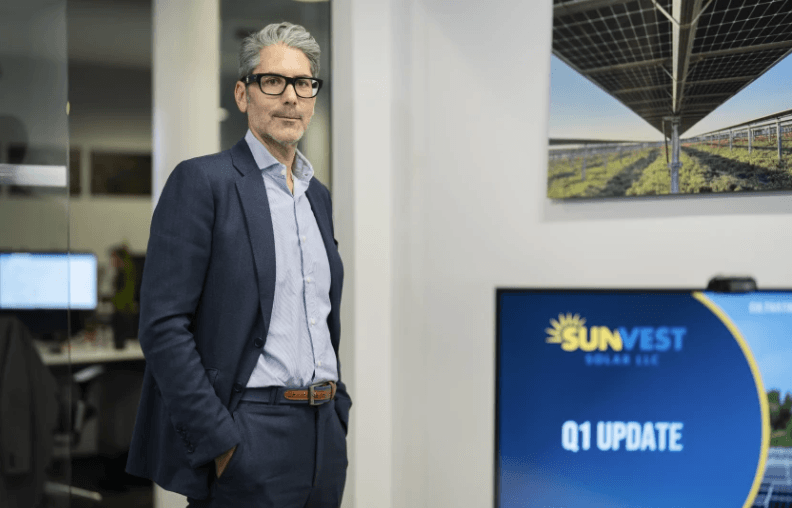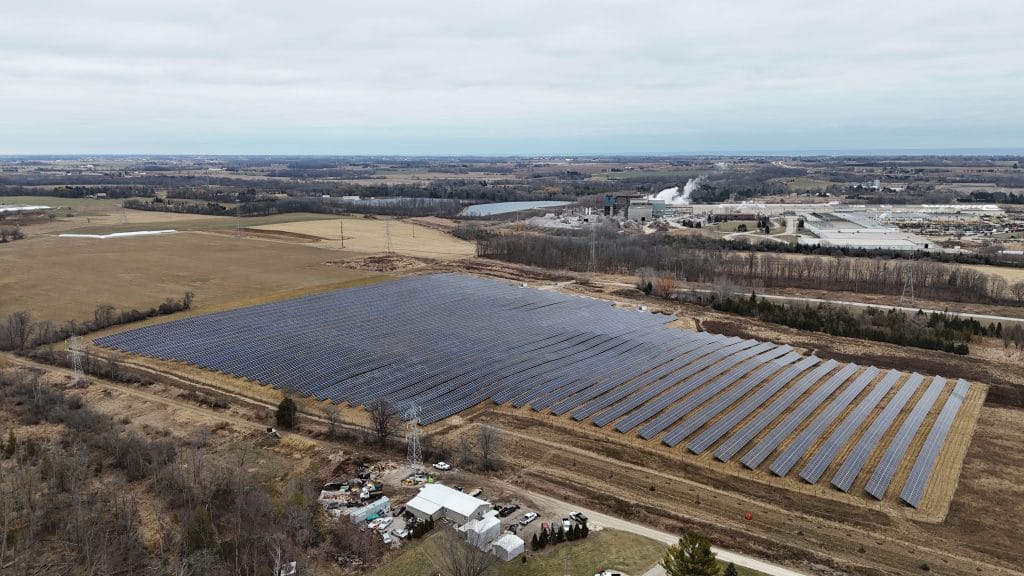Solar Projects Promote Conservation (Literally) From the Ground Up!
Solar energy and healthy land work together beautifully. With smart planning and strategic design, solar projects benefit our soil, plants, insects, wildlife, water, agriculture, and society as a whole.
Digging In: Solar Projects Enhance Soil Health
While plants are naturally “solar powered,” crops demand rich soil to truly reach their potential. Many farmers regularly use fertilizers to enhance soil productivity, but over time, the land needs a break. Farmers know to let a field lie fallow every few years (or even longer) to allow the soil to heal.
Solar projects developed in native habitat aid in accomplishing this. Native plant communities have evolved over thousands of years to naturally restore and fertilize the soil. Solar arrays and native plants offer a very compatible strategy for soil conservation: generating clean energy while the land recovers. In the meantime, there is no need for artificial fertilizers or pesticides, reducing chemical runoff and downstream water pollution!
Cover crops are initially seeded with the native species for quick soil stabilization, and once the natives germinate, they blanket the land. Their nutrients enrich the soil, leading to enhanced aeration, an increase in organic matter, and a boost in microbial activity. All this contributes to the land becoming healthier and leaving it largely organic at the end of the solar project’s life.
Native Plants Make a Natural Pairing with Solar Projects
In our work with Natural Resource Services and other partners, we strive to create solar projects involving native plants. We work to eliminate vegetation that needs fertilization by encouraging the growth of native grasses and perennial wildflowers, which are low maintenance, naturally combat weeds, and are more-drought resistant than non-native grasses.
We work with landowners and our partners to plant a specific seed mix is naturally tuned to the climate and conditions of that specific site.
Solar Project Spaces Have the Power to Create Habitat where Wildlife and Insects Thrive
Any project that supports native habitat restoration benefits ecosystems. A well-crafted solar project strategy can do just that. Native plants integrate into local environments seamlessly, forming a strong natural foundation to support wildlife and other species. Native vegetation provides critical habitat for insects and butterflies. Sites can be integrated into wildlife corridors that preserve otherwise threatened space, supporting migration patterns for butterflies, small game birds, and songbirds.
Native Plants Can Boost the Pollinator Population Up to Three Times!
In addition to environmental impact, pollinator-friendly solar installations can add significant benefits for farmers and society as a whole. Citrus fruits, almonds, cotton, alfalfa, and even soy can reap huge benefits from increased pollinators. In fact, research published by Yale’s Center for Business and the Environment found that pollinator-friendly solar creates over $80,000 per acre in societal benefit over the project’s life in the form of groundwater recharge, reduced soil erosion, carbon sequestration and other benefits. Their work also finds that yields on adjacent fields planted with soy – a crop only partially dependent on pollinators – increase by as much as 6.3 percent!
Getting to the Root of the Matter
Pollinator habitat at solar projects boast superior stormwater management. Corn, soybeans, and row crops traditionally rely on shallow root systems, while native plants can drive their roots up to 12 feet deep! By filtering rainwater effectively, native plants can decrease the impacts of run-off erosion.
Dedicating land for solar use comes with another serious water benefit, as well – or lack thereof! Solar projects don’t require irrigation. This can be a major benefit in parts of the world facing drought and water constraints.
From Grazing to Growing, Agrivoltaic Systems Co-Locate Agriculture and Solar Installations
Agrivoltaic systems combine photovoltaic panels with a variety of types of agriculture. These installations make full use of unique site and climate conditions to maximize plant, animal, and human compatibility.
Farmers have found success in agrivoltaic systems with vegetables of all shapes and sizes: carrots, tomatoes, garlic, beets, and even lettuce! Beekeepers are finding increased honey yield from hives placed adjacent to solar farms populated with native wildflowers. Grazing animals contribute by managing vegetation while simultaneously benefitting from the shade created. Learn more from the American Solar Grazing Association.
If you’re a landowner ready to explore agrivoltaic systems or ways solar can enhance your local conservation efforts, contact us today! The team at SunVest works every day to help our customers access more sustainable energy solutions and protect the planet.
Photo courtesy of Natural Resource Services, Inc.


